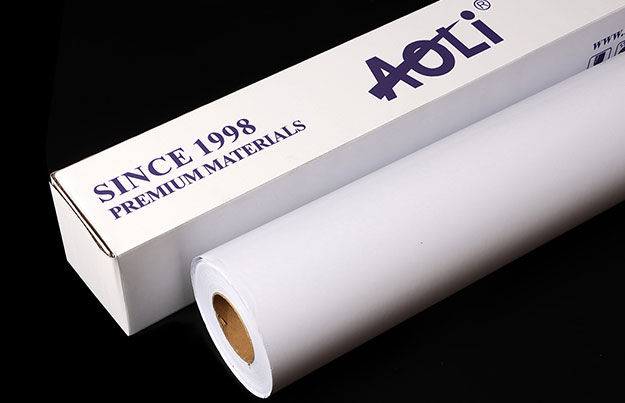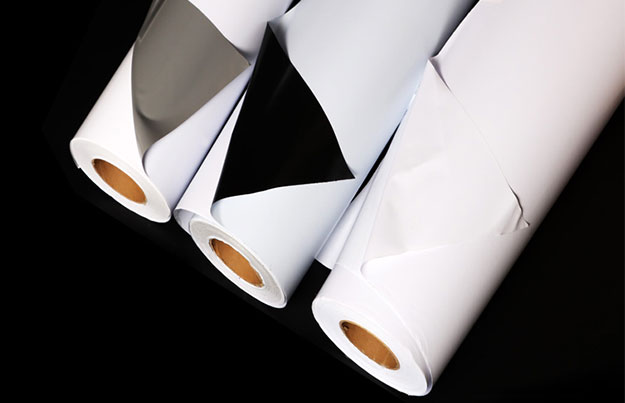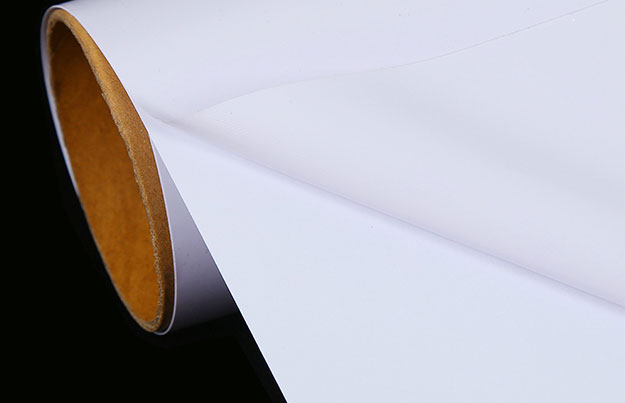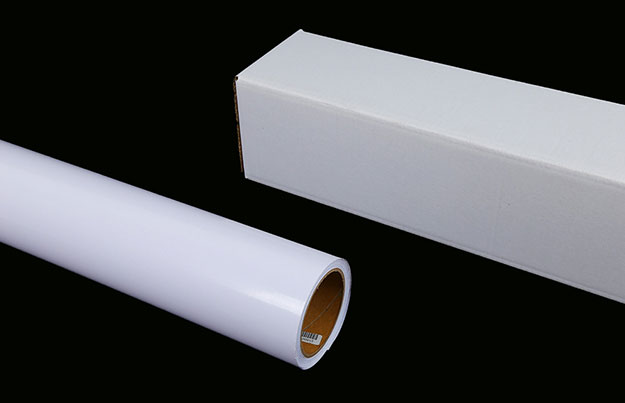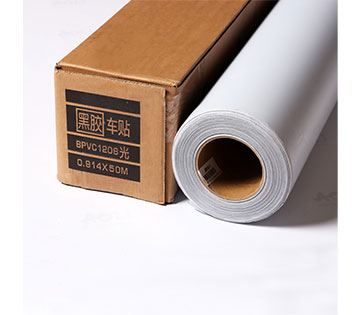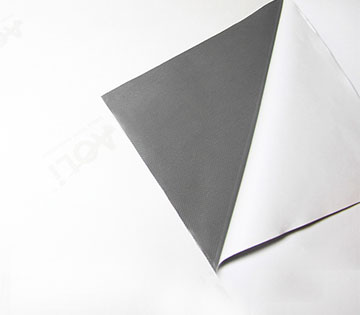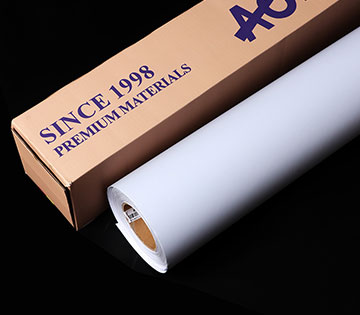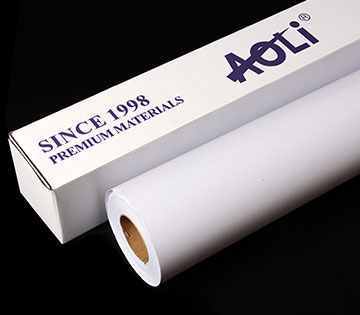Self-adhesive Vinyl
- High color restoration
- Stretchable and malleable
- No glue residue after tearing off
- Attributes
- Product Characteristics
- Application Fields
- Advantages and Value
| Production Process | Laminating
/ adhesive coating
|
| Applicable Ink | Eco-solvent/Solvent/UV/LATEX |
| Surface | Glossy/matte |
| Material | PVC Film |
| PVC Color | Color No.2/Color No.8/Transparent Vinyl |
| Length | 50 meters(OEM) |
| Size | 0.914-1.52m |
- Strong Adhesive Properties: PVC vinyl boasts exceptional adhesive capabilities, securely adhering to various smooth surfaces without easily peeling off.
- Durability: Its excellent weather resistance and abrasion resistance ensure it maintains its aesthetics and functionality over a long period.
- With a certain degree of elasticity, PVC vinyl can adapt to slight surface irregularities, ensuring a smooth and flat application.
- Self-Adhesive Backing: The adhesive backing of PVC vinyl simplifies the installation process. No need for additional adhesives or glues; simply peel off the paper liner and apply the vinyl directly to the desired surface.
- Easy to Clean and Maintain: Cleaning adhesive PVC vinyl is straightforward. It resists stains and can be wiped down with a damp cloth to remove dust or dirt, keeping it looking fresh and new.
- Cost-Effective Solution: Compared to other materials, adhesive PVC vinyl offers a cost-effective solution for various applications. Its durability and ease of use make it a practical choice for both DIY projects and larger-scale installations.
- Self-adhesive vinyl is a thin flexible material that is commonly used to make colourful and eye-catching signs and graphics. Self-adhesive vinyl is waterproof and suitable for indoor and outdoor application, it can also withstand temperatures up to 75 ℃.
The application fields of adhesive PVC vinyl are diverse and extensive, encompassing various industries and uses. Here are some key areas where adhesive PVC vinyl finds its utility:
- Interior decoration and Design:
- Wall decoration: Adhesive PVC vinyl can be used to create vibrant and personalized wall murals, patterns, or even full-wall coverings.
- Furniture Wrapping: Furniture pieces can be transformed with adhesive PVC vinyl, giving them a new look or protecting their surfaces from scratches and wear.
- Glass Applications: Glass surfaces such as windows, doors, and shower enclosures can be decorated or privacy-enhanced with adhesive PVC vinyl films.
- Commercial and Advertising:
- Storefront Displays: Retail stores use adhesive PVC vinyl for window displays, promotional graphics, and branding messages to attract customers.
- Billboard and Poster Advertising: Large-format adhesive PVC vinyl prints are commonly used for outdoor billboards, bus stop shelters, and other advertising spaces.
- Trade Show Graphics: Temporary or semi-permanent graphics for trade shows, exhibitions, and events often utilize adhesive PVC vinyl for ease of installation and removal.
- Vehicle Customization and Graphics:
- Car Wraps and Decals: Entire vehicles or specific areas can be wrapped or decorated with adhesive PVC vinyl for a custom look, advertising, or branding.
- Motorcycle and Bicycle Graphics: Similar to cars, adhesive PVC vinyl can be used to personalize or advertise on motorcycles, bicycles, and other vehicles.
- Signage and Identification:
- Directional Signs: Indoor and outdoor way-finding signage often uses adhesive PVC vinyl for its durability and ease of application.
- Safety and Warning Labels: Labels and stickers with adhesive PVC vinyl are used for safety warnings, product identification, and other informational purposes.
- Retail and Office Signage: Stores, offices, and other commercial spaces rely on adhesive PVC vinyl for branding, promotional messaging, and way-finding.
- Industrial and Construction Applications:
- Floor Marking: Adhesive PVC vinyl tapes and strips are used in industrial settings for floor marking, safety zones, and traffic direction.
- Temporary Wall Coverings: During construction or renovation, adhesive PVC vinyl can be used to protect walls or provide temporary decorative coverings.
- Home Improvement and DIY Projects:
- DIY Crafts: Hobbyists and DIY enthusiasts often use adhesive PVC vinyl for creating personalized crafts, such as scrapbooks, photo albums, and home decoration items.
- Appliance and Electronic Panels: Appliance fronts, electronic device covers, and other household items can be customized or repaired with adhesive PVC vinyl.
The versatility of adhesive PVC vinyl lies in its ability to adhere to various surfaces, its durability, and its ease of use. It’s an excellent choice for both professionals and amateurs alike, offering a cost-effective and creative solution for a wide range of applications.
- Easy Installation and Maintenance: The self-adhesive design simplifies installation, and it’s also straightforward to clean and maintain.
- Environmental Friendliness and Safety: Manufactured using eco-friendly materials, it’s non-toxic and odor-free, meeting relevant safety standards.
- Cost-Effectiveness: Compared to other materials, PVC vinyl offers reasonable pricing and high cost-performance, helping customers save on costs.
- How To Apply Self Adhesive Vinyl?
Applying self-adhesive vinyl is a relatively straightforward process that involves a few key steps. Here’s a guide on how to apply self-adhesive vinyl:
- Prepare the Surface: Begin by ensuring the surface you’re applying the vinyl to is clean, dry, and smooth. Remove any dust, dirt, or grease that could affect the adhesion. If the surface is porous or textured, you may need to prime it first to ensure a smooth application.
- Measure and Cut the Vinyl: Measure the area you want to cover and cut the self-adhesive vinyl to size using a sharp knife or scissors. It’s best to cut the vinyl slightly larger than the desired area to allow for trimming later.
- Remove the release paper: Peel off the paper liner from the adhesive PVC vinyl. Be careful not to touch the adhesive surface with your fingers, as this can leave marks or reduce its stickiness.
- Apply the Vinyl: Position the vinyl on the surface, aligning it as needed. Start by applying the vinyl to one edge or corner and then slowly press it down, smoothing it out as you go. Use a squeegee or a credit card to push out any trapped air bubbles and ensure a flat, even application.
- Avoid Pulling: Before the adhesive completely cures, refrain from excessive pulling or moving the adhered object, as this may compromise the adhesion.
- Trim the Excess Vinyl: Once the vinyl is securely in place, use a sharp knife or scissors to trim away any excess material along the edges. Be careful not to cut into the surface you’re applying the vinyl to.
- Finish and Check: Finally, give the entire area a once-over to ensure there are no bubbles or lifted edges. If needed, gently press down any areas that need further smoothing.
Remember to follow the manufacturer’s instructions for any specific recommendations or requirements related to the self-adhesive vinyl you’re using. Also, it’s always a good idea to practice on a small area first to get a feel for the material and application process before tackling a larger project.
2.How To Store Correctly
To correctly store your adhesive PVC vinyl, follow these steps:
- Choose the Right Environment: Store your adhesive PVC vinyl in a clean, dry, and dust-free environment. Avoid exposure to direct sunlight, as UV rays can damage the material.
- Use Original Packaging: If possible, store the vinyl in its original packaging. This packaging is designed to protect the material from dust, scratches, and other potential damage.
- Avoid Extreme Temperatures: Extreme heat or cold can affect the adhesive properties of the PVC vinyl. Store it in a temperature-controlled environment, ideally between 20°C and 25°C (68°F and 77°F).
- Keep Away from Chemicals: Avoid storing the vinyl near any chemicals or solvents that could potentially react with the material or its adhesive.
- Check Regularly: Periodically inspect the stored vinyl for any signs of damage or degradation. If you notice any issues, such as discoloration or stickiness loss, it’s best to use the vinyl sooner rather than later.
By following these storage tips, you can ensure that your adhesive PVC vinyl remains in good condition and ready for use when needed. Remember to always check the manufacturer’s recommendations for specific storage requirements related to the type of PVC vinyl you have.
F&Q:
Q: Can I print on adhesive PVC vinyl?
A: Yes, adhesive PVC vinyl is compatible with various printing methods, including digital printing, screen printing, and plotter cutting, suitable for these inks: Eco-solvent, Solvent, UV and Latex. This allows for customization and personalization of the vinyl for various applications.
Q: For the adhesive PVC vinyls, what width do you have?
A: Our standard width includes 0.914m, 1.07m, 1.27m, 1.37m and 1.52m.
Q: If I order the adhesive PVC vinyl from you, can I use my brand?
A: As a manufacturer, both OEM & ODM service are acceptable. You can use our brand or your brand.





